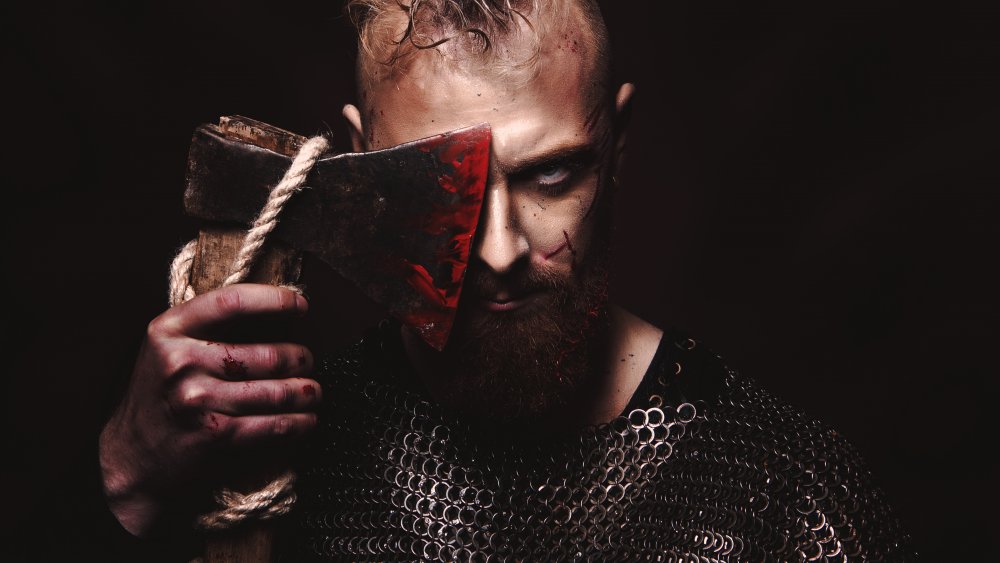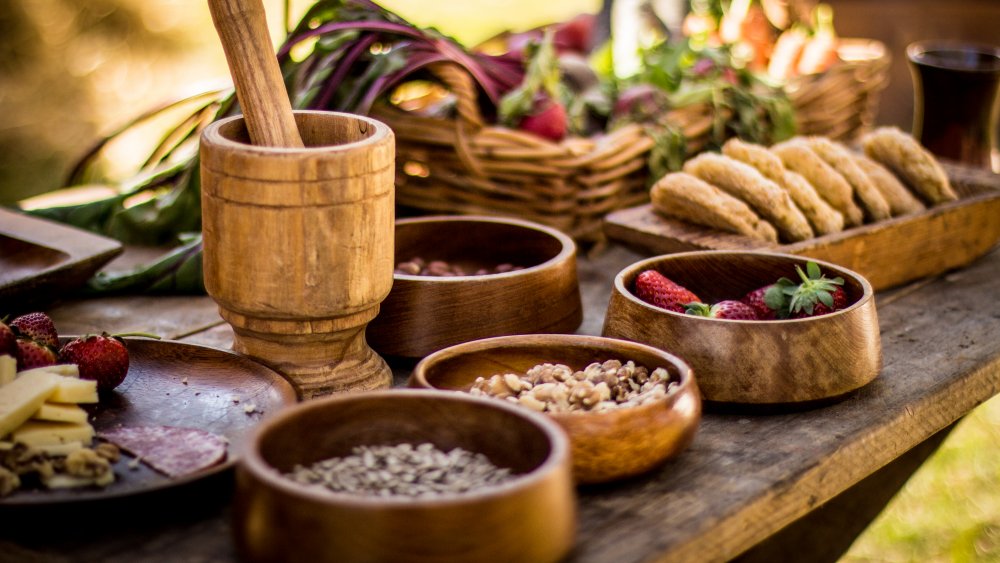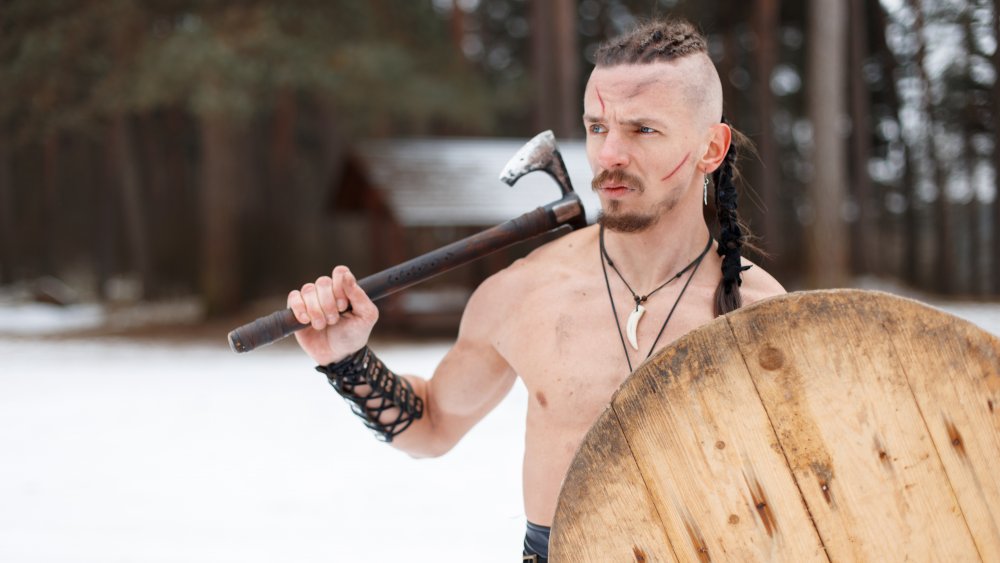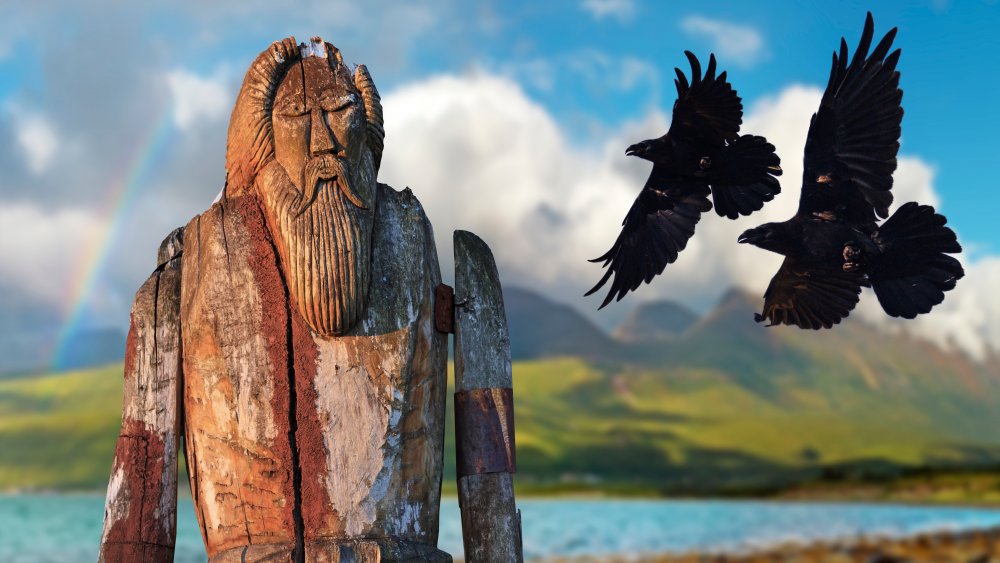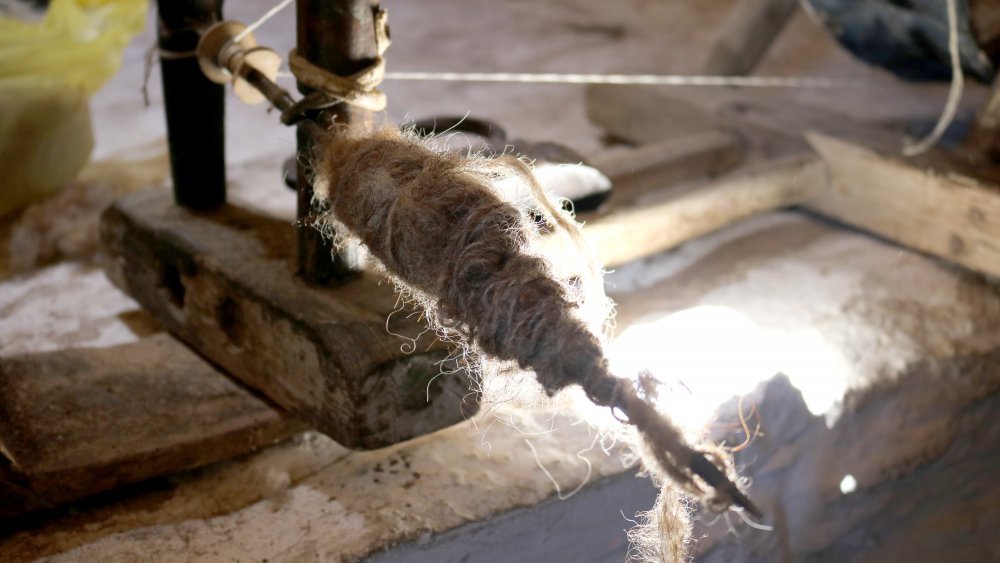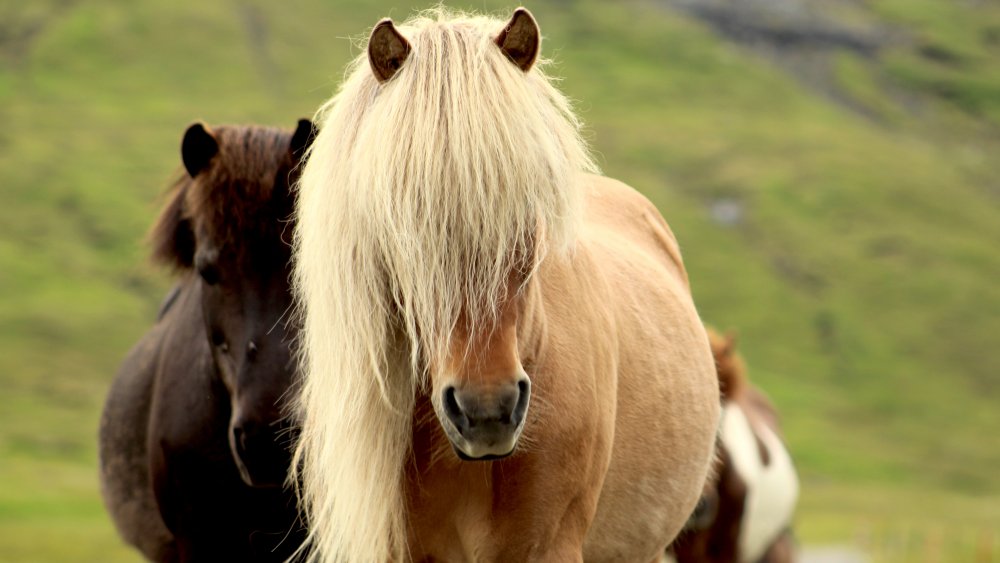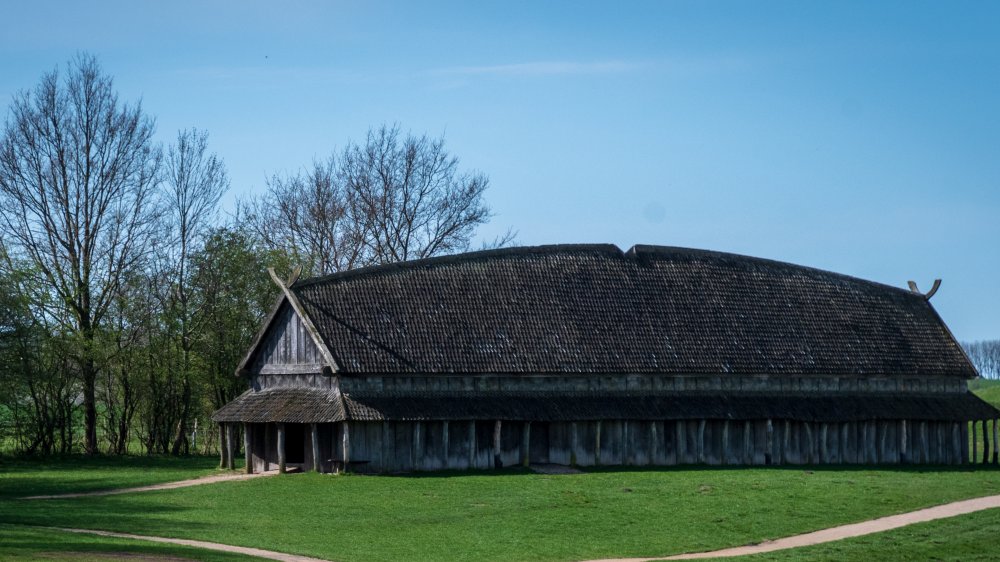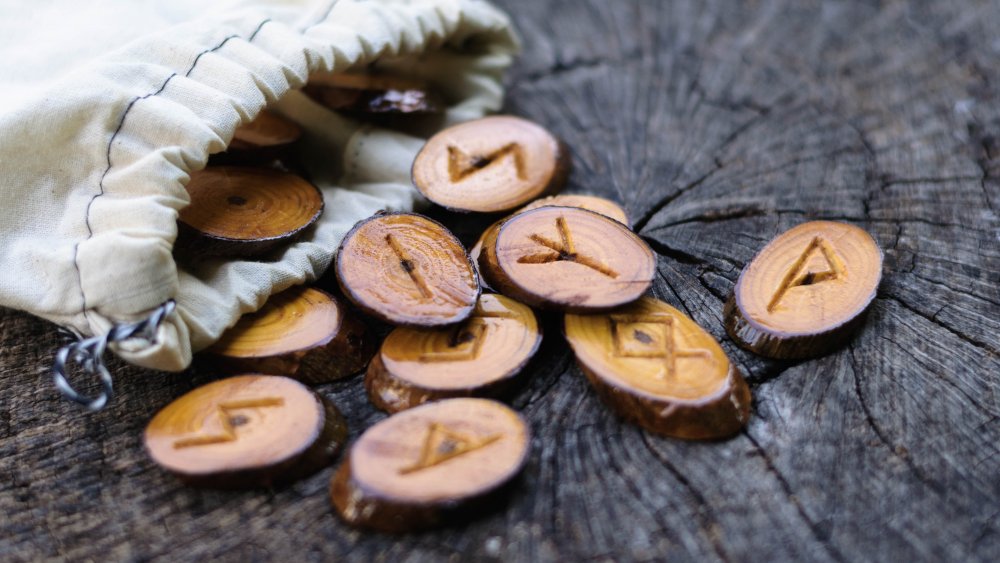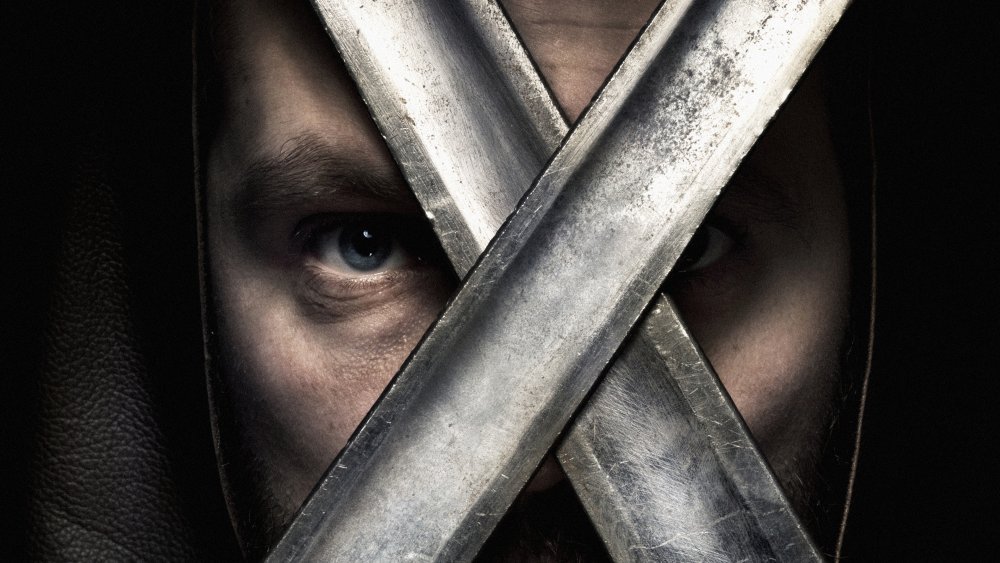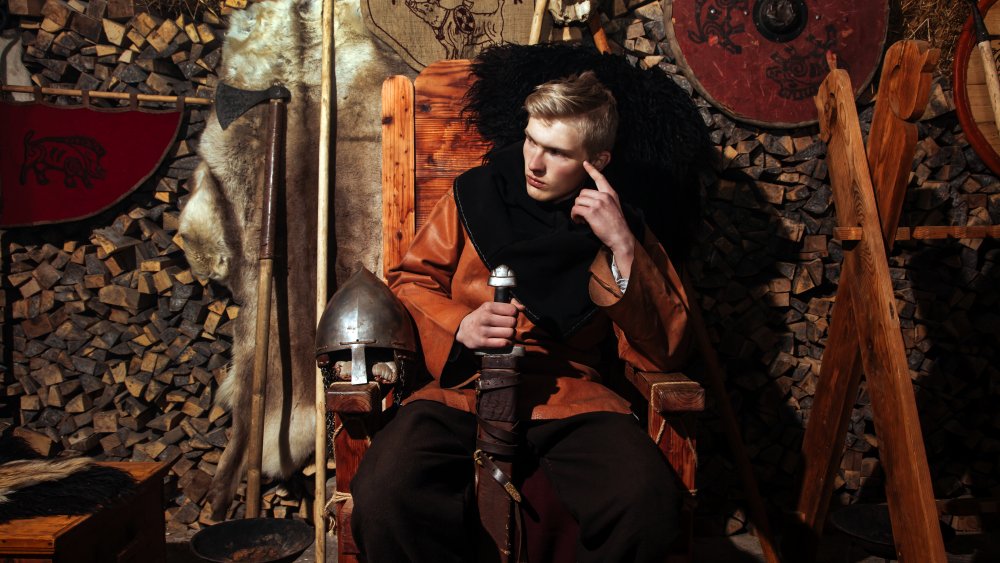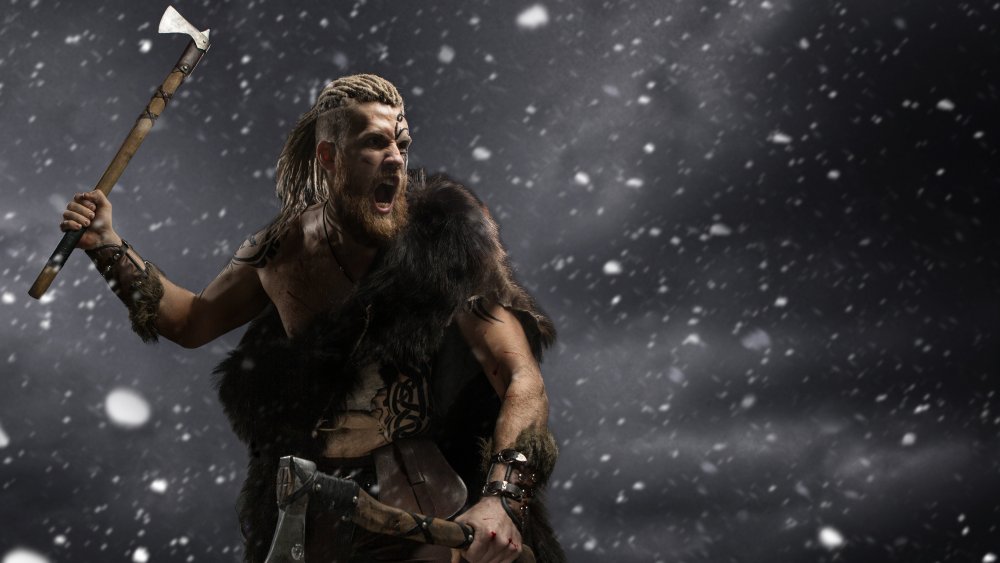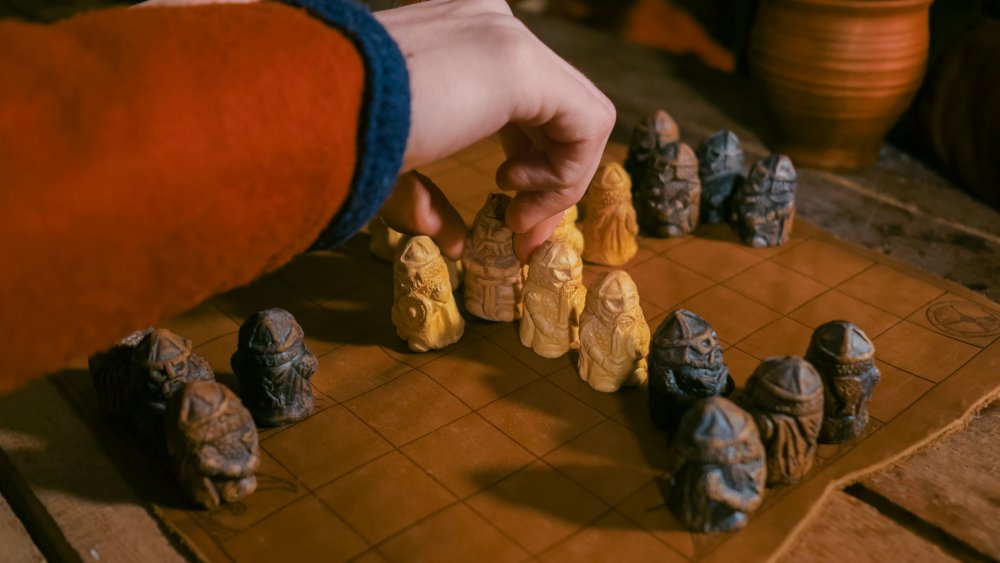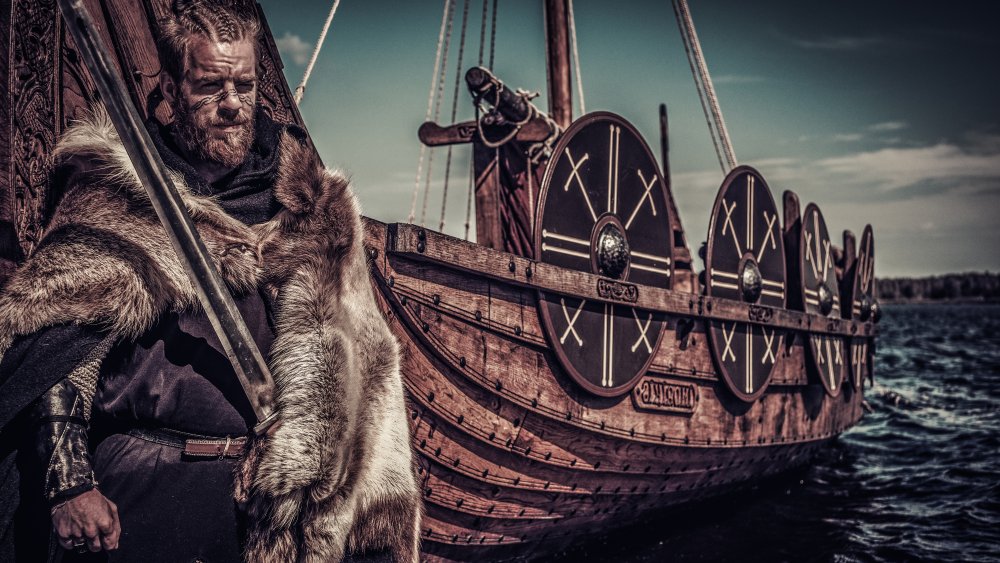What Life Was Really Like As A Viking In 800 AD
When most think of Vikings, what's the first thing that comes to mind? A lot of sailing, quite a bit of looting and pillaging, and probably a lot of burning of cities, right? That's certainly what all the movies and television shows feature, but when you look at everyday life — not just the killing, the capturing of slaves, and the conquering — you find that the popular image of Vikings is a very narrow one indeed, and it's one that leaves out a ton of fascinating history.
According to History Extra, the Vikings really stepped onto the world stage in 793 AD. That's when raiders descended on Lindisfarne's monastery of St. Cuthbert, slaughtered many of the defenseless monks, took the rest captive, and loaded their boats with treasure. History remembers this attack — and others — through the eyes of the victims, and it's not surprising that the Vikings gained their reputation as bloodthirsty, godless invaders.
But... were they really? Was that all they were? In short: not at all. That's just one aspect of Viking life and culture, and over the years, historians have been able to unravel many more details of daily Viking life. So, what were they doing when they weren't spreading terror across the known world? Quite a bit.
Viking food was good, but labor-intensive
Anyone who happened to travel back in time to the Viking era wouldn't be disappointed in the food piled onto the table of a longhouse, but there was a catch: it was highly labor-intensive. According to The National Museum of Denmark, most Viking families were self-sufficient, and responsible for keeping their larders filled themselves. The cold climate and hard work that was a part of daily life meant their diets needed to be high in fat and energy — and it certainly was.
Grains were incredibly important, and in addition to vegetables like cabbage, peas, beans, and parsnips, Viking farmers also grew rye, oats, and millet for everyday use in bread, along with beer and porridge. Food wasn't bland and tasteless, either — honey was a popular sweetener. Honey had another use, too: mead. Mead and strong beer was reserved for special occasions, while weak beer was more of a daily thing, for children and adults alike. And among the richest Vikings, it wouldn't be uncommon to find wine on their tables.
Vikings were also huge fans of fruit, and gathering fruits and berries was primarily a job for the children (via the BBC). Meat and fish were of the utmost importance, and Viking families often kept pigs, cattle, sheep, goats, chickens, and ducks. Fish and seals were hunted in the surrounding areas, and the records left behind by travelers suggest there were as many as 26 different kinds of fish on the menu at various times.
The Viking's grooming and personal hygiene were top-notch
Vikings might have something of a reputation as being unwashed savages, but Science Nordic says the truth is quite different.
Let's start with those warriors. According to contemporary writings, Vikings who settled in the areas they conquered were incredibly popular with the ladies — in no small part due to their grooming preferences. They bathed weekly, kept their hair neat and combed, and regularly changed their clothes. Archaeological evidence supports that: tools like toothpicks, tweezers, combs, and nail cleaners have been found throughout Viking settlements. They even kept their hair neatly cut — carvings suggest the norm was a trimmed beard with a shaved neck, and a hairstyle that was shaggy on top and short on the back and sides.
Other carvings give hints at what hygiene was like for women, too. They preferred to keep their hair long, usually tied back with ribbons in elaborate braids and knots. Based on fragments of clothes recovered from tombs, archaeologists say clothes were made of linen and wool, and while they were warm and functional, they were also pretty. Red and blue were popular colors, although all colors of the rainbow have been found. Silks were sometimes imported by the wealthy and decorated with gold and silver threads or ribbons.
Religion was incredibly important to Vikings
When it comes to Viking religion, the most well-known is the old religion. Early Viking beliefs involve the veneration of gods like Odin and Thor, belief in places like Asgard and Valhalla, and tales of the Valkyries, giants, and the spirits of the Yggdrasil tree. According to The National Museum of Denmark, it was this old religion that told of the epic battle between giants, gods, and humans: Ragnarok.
Most of what we know about early Vikings and their devotion to their gods comes through the writings of outsiders, but given the sheer number of Thor- and Mjollnir-inspired jewelry found in graves, it seems as though many held him in high regard — and prayed to him for their safety.
But surprisingly, Christianity had already started to spread among the Vikings as early as 700. These earliest missionaries had little luck creating Viking converts, but over the next 200 years, more started to embrace Christianity. Viking traders renounced the old gods, were tattooed with the cross, and by 1050, the majority were church-attending Christians. Historians even know when an official change happened, thanks to a runestone which dates to about 965. Inscribed on the stone is a declaration from Harald Bluetooth, making Christianity an official religion. The practical transition happened more slowly, but the reality of it is, at the same time Vikings were off looting and pillaging Christian monasteries, there were Christians back at home.
Spinning, weaving, and the textile industry was a huge deal
According to Lenny, the Vikings' far-flung settlements, explorations, and trading wouldn't have happened without the women back at home, and their incredible skill in the textile industry. Spinning and weaving was the domain of women, and it was insanely labor-intensive. The process would start with shearing the sheep, then cleaning and spinning the wool into yarn — a task that would take thousands of hours to create enough yarn to make a medium-sized sail. Once the yarn was made, it would take around three years for one woman to make that sail — and that gives an idea of the scale of the weaving industry. Processing flax was even more time-consuming, and an estimated 400 hours of labor went into each and every linen shirt.
Cloth and textiles were so important that when it came time to set bride prices and dowries, a woman's skill at weaving was often what decided the price. The importance of spinning and weaving continued to a person's final days, and according to the BBC, the sheer number of Viking graves that contain spindles suggest that for many women, it was a part of daily life.
That was especially true of Icelandic women, who became known for a particularly shaggy, heavy, warm type of woolen coat they produced. They were so desirable that there were specific rules and regulations put in place around the industry, and it ultimately led to the standardization of textile manufacturing and measurements.
Vikings rode luxury horses
At some point in the middle of the 9th century, something odd happened in the horse world. Somewhere in England, a few horses developed a genetic variant, and it was a huge deal. It didn't just change color or coat type, it added the ability to maintain an entirely different gait. The few horses with this gene didn't just walk, trot, canter, and gallop, they could also amble. And ambling? Well, according to The Guardian, riders on a horse that ambles describe it as being as comfortable as sitting in the most comfortable comfy chair in the world.
It's tough to stress just how important a smooth-gaited horse was. They were a main mode of travel at the time, after all, and when you're covering miles and miles over rough roads and uneven ground, it's a huge deal.
Vikings thought so, too. When they settled Iceland, they brought horses with them — and researchers have found that around 10 out of every 13 Icelandic horses that lived between the 9th and 11th centuries had what we now call the gaitkeeper gene. Researchers from the Leibniz Institute for Zoo and Wildlife Research in Berlin say it's likely Vikings recognized the value in this genetic variant and selectively bred for it — ultimately spreading these luxury horses along their trade routes and holding them in high regard back on the home front.
The Viking longhouse wasn't a pleasant place
City life just wasn't for most Vikings, and according to The National Museum of Denmark, most native Viking settlements were made of a single common street, and 6 or 7 small farms. At the heart of the farm was the longhouse — a building with a single room that served as everything from kitchen and dining room to bedrooms — and a fenced area that sometimes contained barns, stables, and workshops. If there were no outbuildings, animals would be kept at one end of the longhouse with the human family members, and if you think that smelled bad, well, it was worse than you think.
Longhouses didn't have ventilation, chimneys, or windows, but they did have fires. And yes, researchers from Aarhus University (via Exarc) proved just how bad it was by building a medieval-style longhouse, lighting some fires, using them for cooking and heating, and then measuring the air quality. It wasn't great — inside the longhouse, the air contained levels well above what the World Health Organization deems safe for things like carbon monoxide and fine particles. Researchers concluded that the people who spent most of their time in the longhouses — likely women and children — were at high risk for lung diseases and respiratory infections... which makes those Viking-style banquets look way less fun.
The Vikings had a deep-seated belief in runes and omens
Religion — old and new — was just one part of the belief systems of the Vikings. Runes were believed to have magical powers, and they were so dangerous that even the gods had to make extreme sacrifices in order to gain the knowledge of runic magic.
Runes were thought to have many purposes, depending on who was using them. In the wrong hands, they could be used to put a curse on someone, or cause them harm from a distance. But in the right hands, those curses could be removed, and people could be healed of whatever ailed them. It was also believed that oracles could throw stones, bones, or wood counters inscribed with runes, and read the resulting patterns to get a glimpse into the future. By the Middle Ages, runes gradually became more commonly used for fun and for communication than magic.
The National Museum of Denmark says that Vikings took great stock in omens, too. Certain occurrences — the patterns formed by a herd of horses or a flock of birds, and rare sights like eclipses — were thought to contain messages from the gods, and those who knew how to interpret them could get a valuable look at what the future held.
Viking nicknames weren't always flattering
Thanks to TV and movies, many have heard of Vikings with names like Ivar the Boneless. That style of name — a first name with a description — was fairly ordinary, but some people... well, let's just say that they didn't get to choose their own nicknames.
Officially, historians from the University of Aberdeen say (via The Conversation) that Viking names were essentially a first name, followed by a descriptor that defined parentage. Think of Tolkien's dwarves — Vikings would be called something like "Ragnar, son of Rothgar." But that can also be pretty vague, especially with a lot of Vikings running around. So, that led to the development of a third part of a name: the nickname, specific to a person's appearance or personality traits.
Many aren't flattering. Just ask Vikings like Eystein Foul-Fart, Audun Thin-Hair, Ulf the Squint-Eyed, or Thordis the Big and yes, that last one was a woman. According to Medievalists, hundreds of Viking nicknames have been preserved in texts detailing the settlement of Iceland, and some were even more heartbreaking. Take Burnt Njal, a Viking who earned his nickname when he and his entire family were killed when rivals burned down their home. Vikings definitely didn't pull any punches, and if you didn't like your nickname? Oh well!
Everyone knew their place in Viking society
The modern world loves a good rags-to-riches tale, but in Viking society, everyone knew their place and the place they were born into was the one that most would stay in. At the top were the kings, who oversaw the magnates, who were essentially locally-elected officials who employed armies and organized large-scale celebrations. While it's unclear just when the Vikings organized beneath a central royal family, The National Museum of Denmark says this happened at some point during the period between 800 and 1050 — the Viking Age.
In the center of the social hierarchy were the farmers, and at the very bottom were the slaves and the thralls. While most Viking families put great weight on personal honor and upholding the honor of their family and their lineage, that absolutely didn't extend to the slaves. These were the people who not only did the hardest and most unpleasant jobs, but they were very much the property of their masters, to be used and traded as they saw fit. They had no actual rights whatsoever, but there are stories of slaves being set free by owners, or being given their freedom after being bought.
Within the slave class, there was some variety in how they were treated. Some slept with the animals and were regularly beaten, while others — particularly men who were skilled at a craft, or exceptionally beautiful women — could earn their way into decent living conditions and something nearing respect.
The importance of the blot sacrifice
Whether or not Vikings practiced human sacrifice has long been a major question surrounding their religious beliefs and practices, and according to The National Museum of Denmark, the answer is a pretty firm, "Yes." But it wasn't common — archaeological findings suggest that a human sacrifice is one of the most important offerings that could be made, and was only done in special circumstances.
Some of the best evidence comes from the sacrificial grounds at Trelleborg, where the remains of five people — including four children between the ages of 4 and 7 — were uncovered. Just what happened is still unclear, but given that the remains were found in wells, it's believed the sacrifices had something to do with Odin, who was believed to have sacrificed one of his eyes to be allowed to drink from Mimir's well and be rewarded with wisdom.
But it is believed that tales of dozens of sacrificed men and boys hanging from trees were likely just some serious Christian propaganda. More common was the practice of blot sacrifice, where animals — particularly horses — were sacrificed to the gods in exchange for their good favor. There were four regularly-occurring blot sacrifices — on the solstices and the equinoxes — and smaller sacrifices could be organized in times of crisis.
Game nights were common
Here's some good news: Viking life wasn't all about hard work. Archaeological digs have uncovered plenty of toys, too, from wooden ships and swords to dolls and musical instruments. Children — and adults — were expected to work, but The National Museum of Denmark says that they played, too.
To those ends, the Vikings developed a surprising number of board and dice games — and it was a pastime that crossed all social classes. Archaeologists have discovered elaborately carved boards, pieces, and dice made from wood, stone, glass, amber, and even exotic materials like ivory, showing just how important a good game night was to the Viking civilization.
One of the most important games was called hnefatafl, and Atlas Obscura says it wasn't just about fun. One of the first clues as to its significance is that pieces have been recovered from dozens and dozens of burials, and they're usually pretty uniform in how they're made. The game is also mentioned in major Viking sagas, but it wasn't until the 20th century that historians finally figured out it wasn't as similar to chess as they'd always assumed. What they still don't know is just how important it was, but given how many people were buried with a board in their arms, it's safe to say that this board game held a special place in the center of Viking culture.
200,000 people left their homeland
Life as a Viking in 800 AD was about more than making a living at home and surviving to see the next day. According to The History Association, that was the year that kicked off the Viking Age, and by 1150, around 200,000 Vikings had said goodbye to their homeland and set off into the world.
It wasn't just about looting and pillaging, either. Vikings traveled as far abroad as Newfoundland and Canada to the west and through Constantinople and into Russia in the east. They established massive trade networks, sold their services as mercenaries to the Byzantine Empire, and settled in some of the most desolate areas of the world — like Iceland and Greenland.
And that's the thing: when history talks about the Vikings, most of the conversation is very narrow. It involves burning and pillaging monasteries, sure, but less often spoken of are the everyday lives of the Vikings who — for example — founded a federation of principalities in what's now Ukraine. Their nation — Kievan Rus — lasted for almost 400 years, and yes, it's an absolute shame that no one ever really talks about the fact that a section of Russia was once ruled by a series of Viking kings (via History). Life as a Viking wasn't about unwashed hordes of mindless killing machines — it was a rich and varied tapestry of culture that's had an indescribable impact on shaping the world as we know it.
